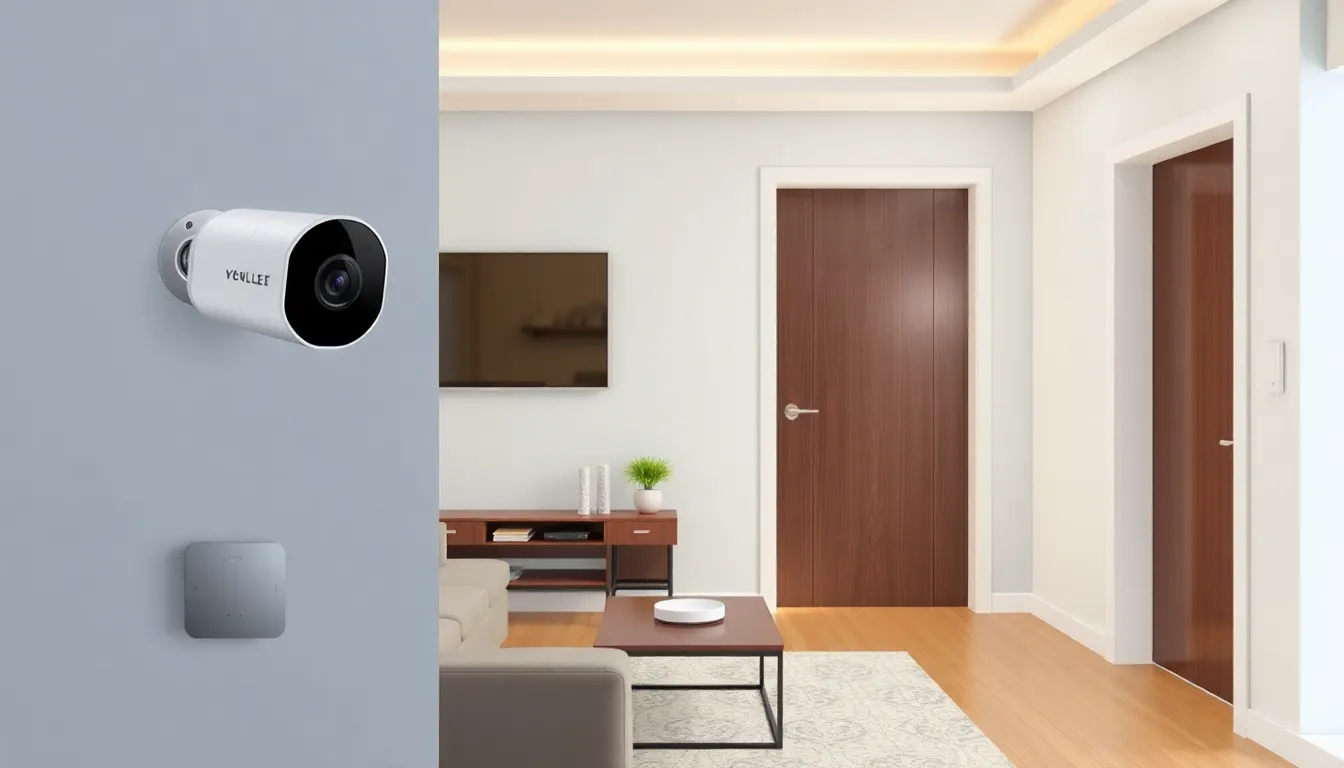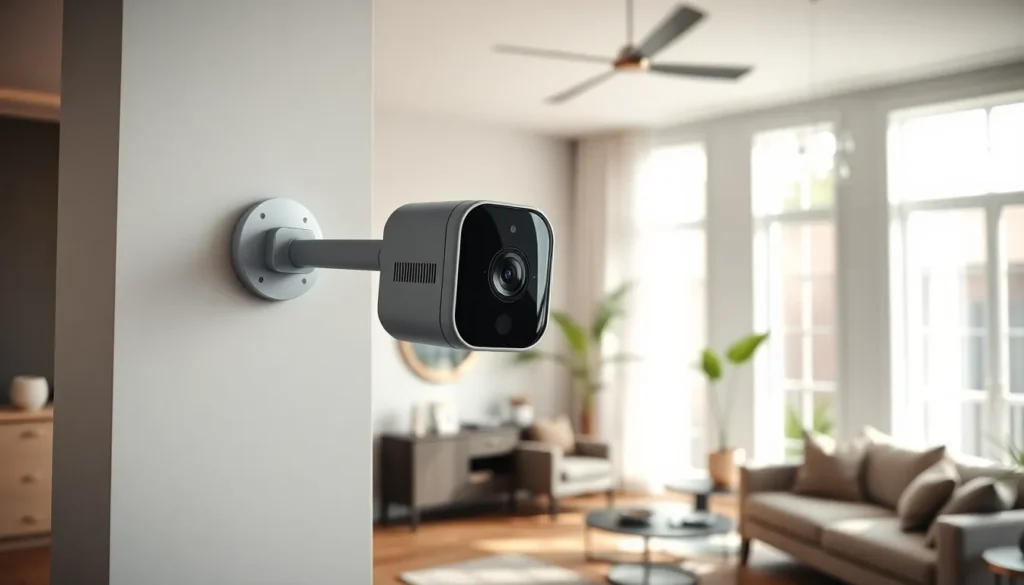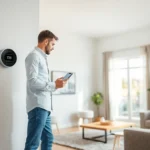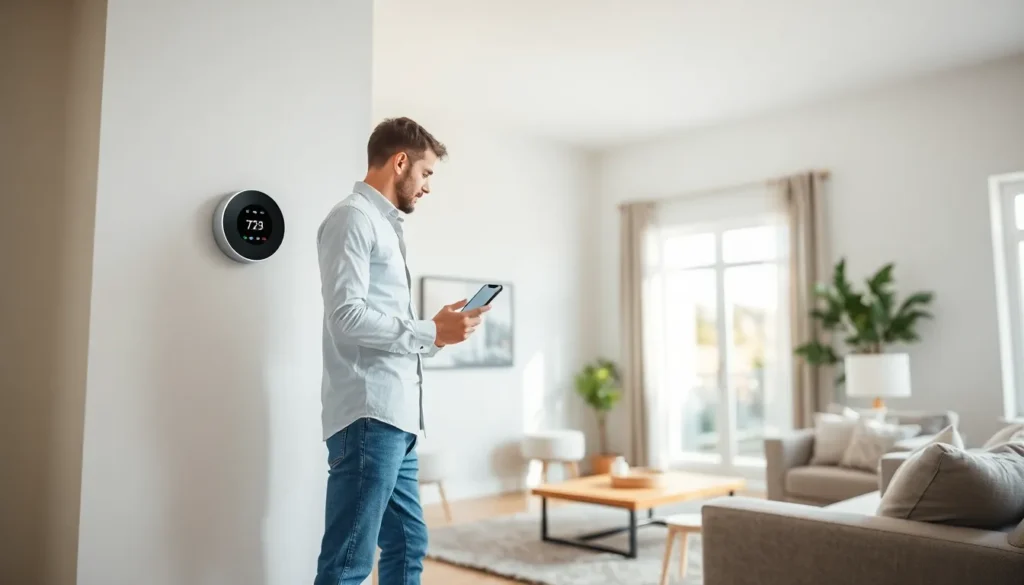In a world where home invaders seem to have a PhD in breaking and entering, smart home security is the superhero every homeowner needs. Imagine a system that doesn’t just alert you when trouble’s brewing but also gives your home the intelligence of a seasoned detective. Gone are the days of relying solely on a flimsy lock and a neighborhood watch that’s more interested in gossip than guarding.
With smart home security, you can keep an eye on your castle from anywhere, even while you’re lounging on the beach sipping a piña colada. These systems offer peace of mind wrapped in the latest tech, ensuring your home stays safe while you focus on more important things—like deciding what to binge-watch next. So, let’s dive into the world of smart security and discover how it can transform your home into a fortress of safety and style.
Table of Contents
ToggleOverview of Smart Home Security
Smart home security systems encompass a range of technologies designed to protect residences. These systems include smart cameras, motion detectors, and smart locks, which collectively enhance security measures. Homeowners gain the ability to monitor real-time footage through their smartphones, providing peace of mind while away from home.
Integrating smart locks allows for keyless entry, which simplifies access for residents and trusted visitors. Security alerts notify homeowners of any unusual activities, ensuring prompt responses to potential threats. Many systems also feature automation, enabling lights and alarms to activate autonomously when suspicious movement occurs.
Utilizing Wi-Fi connectivity, smart security devices offer remote management options. App-based controls let users adjust settings and view live feeds from anywhere. Integration with virtual assistants streamlines voice command capabilities, increasing accessibility and convenience.
In terms of installation, many smart home security devices have user-friendly designs. Homeowners can often set up systems without professional assistance. Some manufacturers provide extensive guides and support, making the transition to smart security smoother.
Cost considerations vary based on system complexity and features. Basic camera kits might start around $100, while comprehensive security systems could exceed $1,000. Investing in smart home security results in enhanced safety, often leading to lower insurance premiums and increased property value.
Each element of a smart security system contributes to fostering an overall sense of safety. Homeowners can tailor their systems to fit specific needs and budgets, ensuring optimal performance. Technological advancements continue to shape the evolution of smart home security, providing innovative solutions to modern safety challenges.
Key Components of Smart Home Security

Smart home security systems consist of several essential components that enhance overall safety. Each element plays a specific role in protecting homes from various threats.
Smart Cameras
Smart cameras provide real-time surveillance and recording capabilities. With cloud storage options, recorded footage remains accessible even if the device is damaged or stolen. Homeowners can monitor these cameras through dedicated applications on their smartphones. Many smart cameras include features such as night vision and motion detection, allowing for effective monitoring even in low light. Users receive immediate notifications if unusual activity is detected. This combination of features makes smart cameras a vital part of any smart security strategy.
Smart Locks
Smart locks offer a secure and convenient alternative to traditional locking mechanisms. Keyless entry simplifies access for homeowners and authorized guests, eliminating the need for physical keys. These locks usually integrate with existing security systems, enabling users to control access remotely. Many models allow temporary access codes for visitors, which enhance security without compromising convenience. Additionally, some smart locks can automatically lock or unlock based on user proximity, providing an extra layer of safety.
Motion Sensors
Motion sensors detect movement and trigger alerts or cameras when unexpected activity occurs. Positioned strategically around the home, these sensors cover entry points and key interior spaces. Upon detecting motion, they send notifications to homeowners, allowing for immediate action. Some advanced models also discern between humans and animals, reducing false alarms. By automating lighting or alarms in response to disturbances, motion sensors contribute significantly to a comprehensive smart home security system.
Benefits of Smart Home Security
Smart home security systems provide numerous advantages that enhance safety and peace of mind for homeowners. These systems integrate advanced technology, offering convenience, improved monitoring, and tailored solutions for individual needs.
Enhanced Convenience
Smart home security systems streamline daily routines. Residents gain the ability to control entry points with keyless locks, making access simple for family and trusted visitors. Notifications alert homeowners of any suspicious activity instantly. Customization features allow users to set schedules for lights and alarms, ensuring that homes remain secure while they’re away. Compatibility with smart assistants simplifies voice-activated commands. This technology not only makes it easy for homeowners to manage their security but also enhances their overall quality of life.
Remote Monitoring
Remote monitoring capabilities significantly improve a homeowner’s ability to oversee their property. Users access real-time video feeds from smart cameras via their smartphones, providing increased awareness of their surroundings. Alerts for unusual movements deliver prompt notifications, enabling quick responses to potential threats. Homeowners can monitor their homes from anywhere, whether at work or traveling. Cloud storage options offer secure data management, ensuring that recorded footage remains accessible when needed. This level of oversight cultivates a greater sense of security and control over their living environment.
Challenges and Considerations
Smart home security systems present various challenges and considerations for homeowners. Addressing these concerns is vital for effective implementation and operation.
Privacy Concerns
Privacy remains a top concern with smart home security systems. Many users worry about data collection and unauthorized access to their footage. Smart cameras and devices often store information in the cloud, sometimes raising security issues if data breaches occur. Users should verify manufacturers’ privacy policies, ensuring robust protections are in place. Experts recommend choosing devices with encryption features to safeguard personal information. Additional steps include adjusting settings to limit data sharing and understanding user agreements comprehensively.
System Compatibility
System compatibility poses another significant challenge for smart home security integration. Homeowners frequently utilize multiple devices from different brands, leading to potential connectivity issues. It’s crucial to ensure that all components, such as cameras, sensors, and alarms, can communicate effectively. This often requires thorough research on compatibility before purchasing devices. Choosing products that adhere to common standards, such as Zigbee or Z-Wave, enhances compatibility. Additionally, relying on smart home hubs can streamline device management, creating a cohesive security environment.
Smart home security systems represent a significant leap forward in protecting homes and enhancing peace of mind. With features like remote monitoring and intelligent alerts homeowners can stay connected and informed about their property’s safety. The integration of smart cameras smart locks and motion detectors creates a comprehensive security network that adapts to individual needs.
As technology continues to advance these systems will only become more effective and user-friendly. By investing in smart home security homeowners not only safeguard their property but also enjoy the convenience of modern living. Prioritizing security in today’s digital age is essential for ensuring a safe and secure environment for families.













